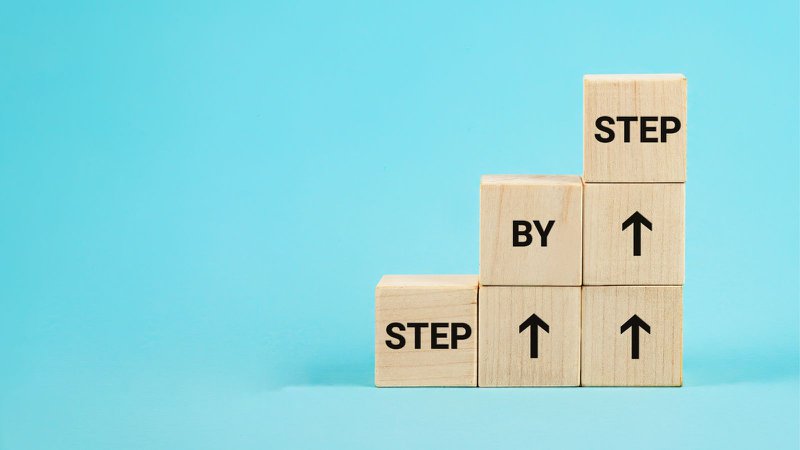What does “change” mean to your business? Is it through large projects or is integral to the way you work? Continuous Improvement is a long-term approach to improving products and services through frequent, small changes. Could it help your business to thrive?
Sometimes the need for a major project may seem inescapable, with months of hard work and significant costs attached. Once complete, how likely is it that everything will be perfect? Will the new processes stay set in stone until the next upheaval in a few years' time?
Large scale, lengthy projects often present complex risks and challenges, and it’s difficult for any business to commit significant resources when success isn’t guaranteed. Maintaining a competitive edge requires businesses to adapt their processes and methods in order to effect change faster.
An alternative (or perhaps complementary) approach to breakthrough change, is to make smaller refinements on a regular basis. One approach that companies of any size can leverage for continuous, incremental improvement is called Kaizen. Originating in Japan, the word translates to mean change (kai) for the good (zen) and it is often referred to as Continuous Improvement (or CI).
History of Continuous Improvement
Continuous improvement has its roots in lean manufacturing, a process pioneered by Ford more than 100 years ago which then gained prominence in the late 1940s when it was adopted, and further developed, by Toyota. At that time, the fledgling Toyota car company realised that, in order to compete with the American car industry, it had to not only understand American mass production methods, but to be able to make them much better.
Today, Toyota is admired by the world’s consumers for its products and by business leaders for its ability to turn a profit year on year. Much of this success can be attributed to the Toyota Production System (TPS), an original manufacturing philosophy that aims to make incremental improvements to standardised work to help maximise productivity.
Olympic athletes use this same theory of Continuous Improvement. They look for incremental refinements that gradually improve their performance as immediate and significant gain in ability might be unrealistic. This consistent approach to little and often improvement is what excels them into the world’s elite athletes.
Have you ever tweaked a job sheet, or perhaps made a checklist that makes it quick and easy for others to repeat a process? This is an example of continuous improvement. Put simply, it’s a straightforward approach to improving the way that work is carried out, so that activities flow naturally and are easily repeatable.
Has you business got an efficiency problem? Try Our 28 Day Sprint, Today!
Operational Savings
According to KaiNexus in 'The ROI of Continuous Improvement' Continuous Improvements can be associated with massive operational savings:
1 in 10 improvements save money … (each saving on average) $31,043 in the first year of implementation.
1 in 4 improvements save time… (each saving on average) 270 hours in the first year of implementation.
Most successful changes not only save time and money, but can also make your team’s jobs easier (and hopefully more pleasant) to perform. Companies that follow this principle of Kaizen or Continuous Improvement (CI) have a mindset that everything can be improved. They strive to achieve increasing levels of safety, satisfaction and quality. What’s not to like?

The Accumulating Power of Tiny Gains
As much as we wish it wasn’t the case, all businesses face challenges at some point or other in their journey – it’s simply an unavoidable fact. Challenges that require significant adaptations or improvements on the part of the business in order to overcome them. In these instances, it can be tempting to focus efforts on finding those “big solutions” that can be implemented as fast as possible. But whilst this approach may sound good in theory, it's not always necessary to tackle big problems with big solutions. In fact, most of the time it’s better not to. Risks and costs can be high, and often these attempts at change can lead to failure.
Continuous Improvement is an incremental and sustainable approach to change. It focuses on small, regular efforts to improve standardised work that are typically both low in cost and risk. Over time the accumulating effect of small improvements is often more powerful than attempts at radical change.
Changing things a little at a time (but doing so consistently) will also help introduce a cultural shift within the workplace; one in which standardised processes, and a commitment to continuous improvement, are seen as the norm, rather than necessarily as just some ‘buzzword’ bandied about by the higher-ups.
What is Standardised Work in Continuous Improvement?
Standardised work is the habit of documenting and methodically using current best practice to complete a process. As this procedure is improved using continuous improvement methods, the new standard becomes the baseline for further improvements.
Learn more about standardised work, one of the most effective tools in continuous improvement. Better still, why not get in touch with us directly to see how we can help you introduce standardised practises within your workplace?
How Can Our Mobile Forms and Reporting App Help?
Wanting to implement Continuous Improvement principles is one thing, having the tools to do so is quite another. And whilst the idea seems great in theory, many businesses believe it’s going to take them months, if not years, to introduce more standardised work processes. That’s why we came up with the idea for the Faster Fieldwork 28 Day Sprint.
Here at Rugged Data, we’ll offer you the services of our coaches, who are specialised in continuous improvement and lean working principles, to review and revise your processes in four weeks. At the end, you’ll have a more streamlined working system, and a specially-designed app to simplify and standardise your workflow and reporting.
Rugged Data offers so much more than solely a reporting system, though. It provides a comprehensive data capture app to help all manner of businesses improve their efficiency. Our goal is to help technicians in the field work quicker, smarter and with more streamlined tools at their disposal. So, whether you work in fire safety, pest control, security or any other field service, we can help transform your working processes.
Sound too good to be true? Trust us, it’s not. If we don’t get your app up and running with your main process within 28 days – a technician’s field report, for instance – then we’ll refund your setup fee and build your form entirely for free.
Likewise, if after 90 days you’re not happy with what your new technological partnership with Rugged Data is offering, then you again get a full refund. That’s how confident we are in our offering. We believe in it, and we know you will too.
So, what are you waiting for? Your journey towards more streamlined working starts today.



